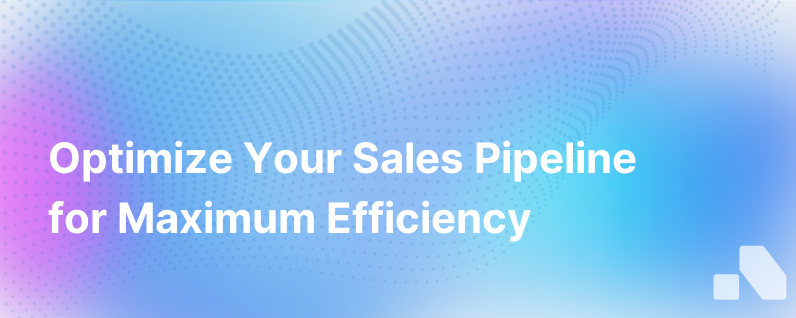
In the dynamic world of B2B sales, the pipeline isn’t just a tool for tracking opportunities; it’s the lifeblood of your business. A well-managed sales pipeline nurtures prospects through every stage of the buying journey, offering a clear blueprint for growth and revenue. Successful organizations understand that pipeline management isn’t just about keeping tabs on deals—it’s about creating a systematic, scalable approach to winning business.
The Anatomy of a Sales Pipeline
A sales pipeline is a visual representation of where prospects are in the sales process. It comprises several stages that typically begin with 'Lead Generation' and conclude with 'Closing'. Here are the common stages:
- Lead Generation: The first step is identifying potential customers or 'leads'. This stage involves marketing efforts such as content marketing, paid ads, and networking events aimed at capturing interest.
- Lead Qualification: After you’ve generated a slew of leads, the next step is to sift through them. This involves determining which leads are serious prospects ready for engagement.
- Meeting Scheduled: Here, you're setting up meetings to rap with prospects. This is where initial conversations and product demos happen.
- Needs Analysis: At this stage, you assess the prospects’ needs in depth. This is critical – you can’t sell a solution if you don’t fully fathom the problem.
- Proposal: Based on your understanding of the client’s needs, you send over a proposal detailing how your product or service can solve their problem.
- Negotiation: Now it’s game time. You and the prospect negotiate terms. This often involves price haggles, service level agreements, and contract details.
- Closing: The finish line. The prospect agrees to the terms, signs on the dotted line, and becomes a customer.
- Post-Sale: A sometimes-overlooked stage, but crucial for retention. Ensuring customer success and satisfaction can lead to renewals and upsales.
Why a Vibrant Sales Pipeline Matters
A robust pipeline holds immense power—it's the forecasting tool that guides strategic decisions. Here’s why a vibrant pipeline is essential:
- Visibility: It provides crystal clear visibility into future revenue, enabling the company to plan and strategize with greater accuracy.
- Efficiency: It helps streamline the sales process, enabling reps to prioritize their efforts on leads that are most likely to convert.
- Forecasting: It’s a critical forecasting tool. By examining the pipeline, you can predict cash flow, revenue, and growth with a higher degree of confidence.
- Health Indicator: The health of your pipeline directly correlates with the health of your business. A full and moving pipeline indicates growth; a stagnant one signals trouble.
Sales Pipeline Management Best Practices
Managing a sales pipeline is akin to tending a garden. It requires regular attention, care, and strategy. Here's how to optimize your pipeline management:
- Qualify Leads Rigorously: Use a lead scoring system to evaluate and progress only those prospects with real potential. This saves time and focuses efforts on high-value targets.
- Use a CRM tool: Utilize Customer Relationship Management software to track interactions, schedule follow-ups, and maintain the pipeline's integrity. It’s a lifesaver for organizing and analyzing data.
- Monitor and Measure Constantly: Regularly review key metrics like conversion rates, average deal size, and pipeline velocity. This will help identify blockages and areas for improvement.
- Keep the Pipeline Clean: Regularly purge dead-end leads from the pipeline to maintain its accuracy and ensure the sales team is focused on viable opportunities.
- Train and Equip Your Team: Empower your sales team with the knowledge, tools, and resources they need to move deals through the pipeline effectively.
Challenges in Pipeline Management
It’s not all smooth sailing. There are hurdles on the road to pipeline mastery:
- Data Integrity: Erroneous data can wreak havoc, leading to inaccurate forecasts and misguided efforts.
- Inconsistent Processes: Without a standardized sales process, managing the pipeline can become chaotic and inefficiencies can reverberate throughout.
- Inadequate Follow-up: Deals can fall through the cracks due to poor follow-up practices. The pipeline is only effective if opportunities are actively pushed forward.
- Pipeline Bloat: Filling the pipeline with unqualified leads can create an illusion of potential where none exists, misguiding strategy and focus.
Metrics for Pipeline Health
To confirm that your pipeline is in tip-top shape, track these metrics:
- Pipeline Value: The total value of all opportunities at each stage.
- Win Rate: The percentage of deals closed won out of all opportunities.
- Average Deal Size: The mean value of closed deals over a given period.
- Sales Velocity: How quickly deals move through the pipeline, from lead to closed sale.
- Conversion Rate: The ratio of leads that progress from one stage to the next.
Leveraging AI for Pipeline Optimization
In the age of artificial intelligence, AI-powered tools offer unprecedented opportunities for pipeline optimization. Take Aomni, for example. This AI platform offers real-time account research, actionable competitive insights, and personalized sales content that slash the time dependency for sales preparation. By condensing what might have taken hours into minutes, Aomni and similar AI platforms are redefining what it means to have a highly efficient sales pipeline.
The Path Forward
To sum up, a strategic, well-managed sales pipeline is vital for growth and scalability in a B2B environment. It requires careful management, consistent attention, and the embrace of next-gen tech to stay competitive. By following best practices and overcoming typical challenges, you can create a pipeline that not only predicts growth but actively propels it.
Remember that a prudent pipeline is more than a simple sales tool—it’s a growth engine that accelerates your business toward its long-term objectives. Nourishing this engine with intelligent strategies and leveraging technological advancements like Aomni can usher in a new era of sales success, driving your startup to new heights.